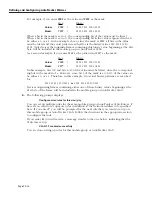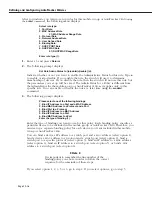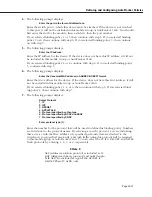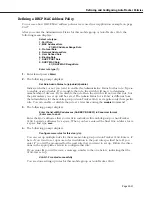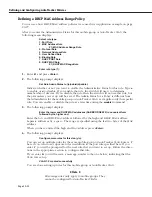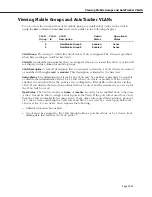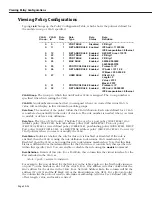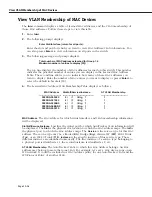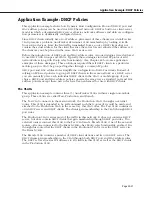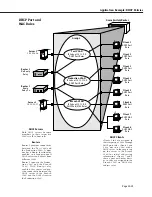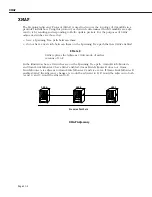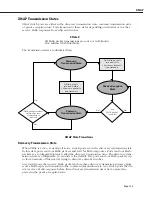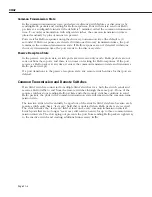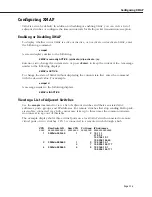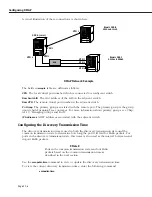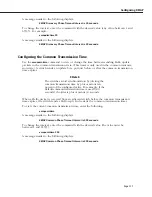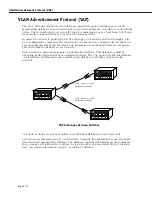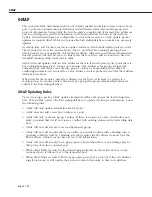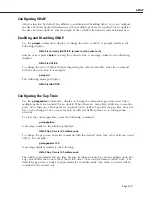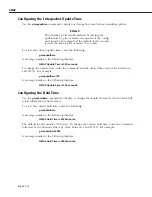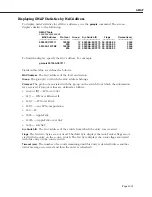
Application Example: DHCP Policies
Page 20-28
DHCP Servers and Clients
DHCP
clients must be able to communicate with a
DHCP
server at initialization. The most reli-
able way to ensure this communication is for the server and its associated clients to share the
same
VLAN
or mobile group. However, if the network configuration does not lend itself to
this solution (as the Production
VLAN
does not in this application example), then the server
and clients can communicate through a router with Bootp relay enabled.
The
DHCP
servers and clients in this example are either in the same
VLAN
or are connected
through a router with Bootp relay. All clients in the Test
VLAN
receive IP addresses from the
server in their
VLAN
(Server 1). Likewise, all clients in the Branch
VLAN
receive IP addresses
from their local server (Server 2). The
DHCP
clients in the Production
VLAN
do not have a
local
DHCP
server, so they must rely on the Bootp relay functionality in external Router 2 to
obtain their IP addresses from the
DHCP
server in the Branch
VLAN
.
Both
DHCP
servers gain membership to their
VLAN
s through IP network address policies.
The following table summarizes the
VLAN
architecture and policies for all devices in this
network configuration. The diagram on the following page illustrates this network configura-
tion.
Devices and VLAN Membership
Device
VLAN Membership
Policy Used/Router Role
DHCP Server 1
Test VLAN
IP subnetwork rule=10.15.X.X
DHCP Server 2
Branch VLAN
IP subnetwork rule=10.13.X.X
External Router 1
Test VLAN
Production VLAN
Connects Test VLAN to Production VLAN
External Router 2
Production VLAN
Branch VLAN
Bootp relay provides access to DHCP server in
Branch VLAN for clients in Production VLAN.
DHCP Client 1
Test VLAN
DHCP Port Rule
DHCP Client 2
Test VLAN
DHCP Port Rule
DHCP Client 3
Production VLAN
DHCP Port Rule
DHCP Client 4
Production VLAN
DHCP Port Rule
DHCP Client 5
Branch VLAN
DHCP Port Rule
DHCP Client 6
Branch VLAN
DHCP Port Rule
DHCP Client 7
Branch VLAN
DHCP MAC Address Rule
DHCP Client 8
Branch VLAN
DHCP MAC Address Rule
Summary of Contents for Omni Switch/Router
Page 1: ...Part No 060166 10 Rev C March 2005 Omni Switch Router User Manual Release 4 5 www alcatel com ...
Page 4: ...page iv ...
Page 110: ...WAN Modules Page 3 40 ...
Page 156: ...UI Table Filtering Using Search and Filter Commands Page 4 46 ...
Page 164: ...Using ZMODEM Page 5 8 ...
Page 186: ...Displaying and Setting the Swap State Page 6 22 ...
Page 202: ...Creating a New File System Page 7 16 ...
Page 270: ...Displaying Secure Access Entries in the MPM Log Page 10 14 ...
Page 430: ...OmniChannel Page 15 16 ...
Page 496: ...Configuring Source Route to Transparent Bridging Page 17 48 ...
Page 542: ...Dissimilar LAN Switching Capabilities Page 18 46 ...
Page 646: ...Application Example DHCP Policies Page 20 30 ...
Page 660: ...GMAP Page 21 14 ...
Page 710: ...Viewing the Virtual Interface of Multicast VLANs Page 23 16 ...
Page 722: ...Application Example 5 Page 24 12 ...
Page 788: ...Viewing UDP Relay Statistics Page 26 24 ...
Page 872: ...The WAN Port Software Menu Page 28 46 ...
Page 960: ...Deleting a PPP Entity Page 30 22 ...
Page 978: ...Displaying Link Status Page 31 18 ...
Page 988: ...Displaying ISDN Configuration Entry Status Page 32 10 ...
Page 1024: ...Backup Services Commands Page 34 14 ...
Page 1062: ...Diagnostic Test Cable Schematics Page 36 24 ...
Page 1072: ...Configuring a Switch with an MPX Page A 10 ...
Page 1086: ...Page B 14 ...
Page 1100: ...Page I 14 Index ...

